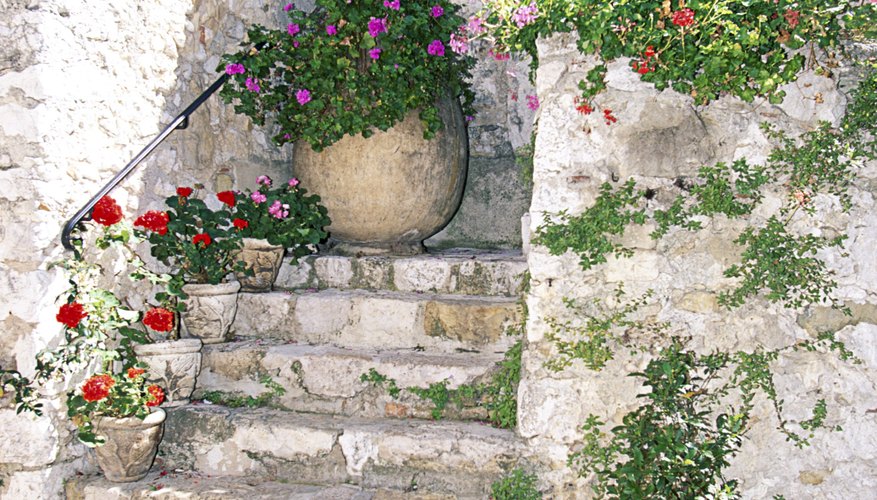Crumbling stone steps may look time-worn and quaint but they are a serious hazard. An uneven, damaged step can cause someone to miss her footing. A slip or fall can then result in serious injury. Mending such steps is a sensible option, but you need to proceed with care. A clumsily applied cement or concrete repair can soon deteriorate and prove to be a risk in itself. Instead, you should use an alternative that restores crumbling stone steps to their former solid finish.
Recent Crumbling Stone
Find a repair mortar to use on stone steps that have recently started to crumble. Proprietary mortars designed specifically for stone repairs contain tiny pieces of crushed stone that bond together to create a robust finish.
Follow the manufacturer’s instructions and add cement and sand to the repair mortar. Add water and mix well.
Ensure the stone steps are clean and free of dust. Dampen them. Apply the repair mortar with a trowel and leave a smooth finish. Do not apply in thicknesses of more than 40mm. If you need to build up the steps to a greater thickness than 40mm, use separate coats.
- Find a repair mortar to use on stone steps that have recently started to crumble.
- If you need to build up the steps to a greater thickness than 40mm, use separate coats.
Apply a light mist of water to the repair mortar two times a day for a week. If the weather is particularly hot, apply the light mist of water more often.
Fresh Slabs
Repair the treads of badly-worn stone steps with fresh slabs of stone. Measure the treads and ask a stonemason to cut suitable stone to the right size. You may need a stonemason to first check the steps to assess the type of stone and colour.
- Repair the treads of badly-worn stone steps with fresh slabs of stone.
- Measure the treads and ask a stonemason to cut suitable stone to the right size.
Chisel the treads to remove the worn surface. Cement the new stone treads in place. Use a mortar mix of one part cement to two parts sand. Sieve the sand first so that it’s as fine as possible. If the steps are dry, dampen them before applying the mortar.
Replace worn stone risers in a similar way to treads. Ask a stonemason to cut stone to match the size of the risers. Chisel the worn risers to produce an even surface. Fix the new stone risers in place with a cement and sand mix as above.
Use new risers to provide additional support to new treads. In this instance, the stone of the new risers doesn’t need to be as thick as the treads. To create slightly deeper and safer treads than those of the original stone steps, allow the treads to project beyond the risers by 16mm.
TIP
Always wear a face mask when working with stone. The dust can affect your nose, throat and lungs.
